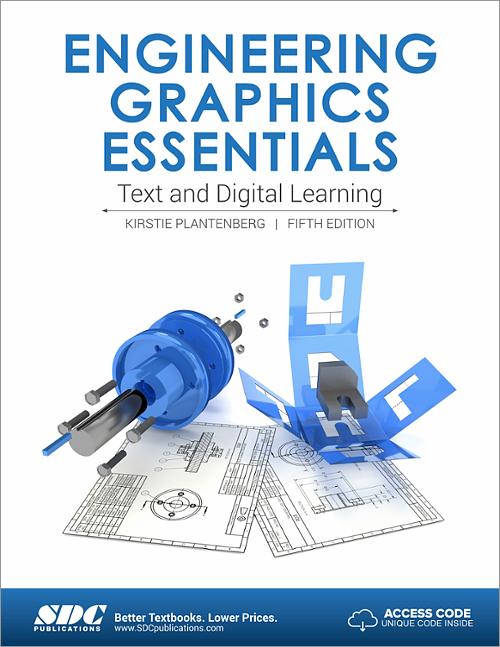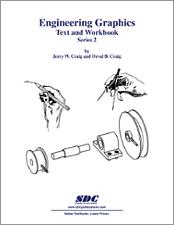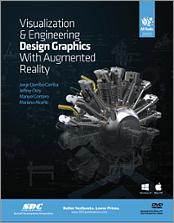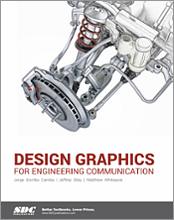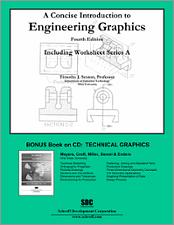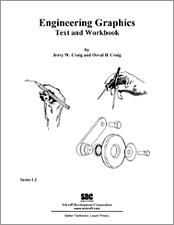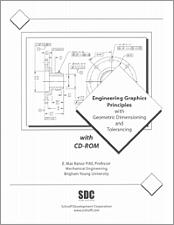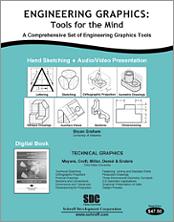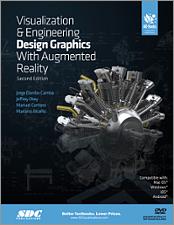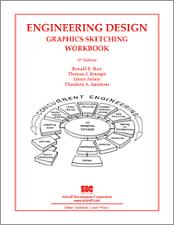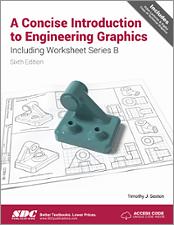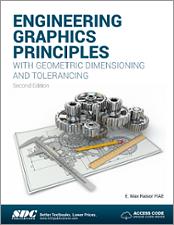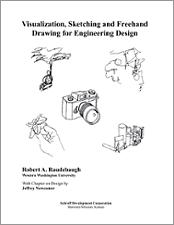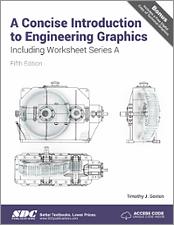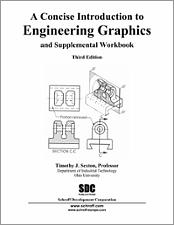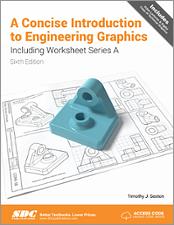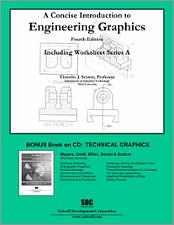Engineering Graphics Essentials Fifth Edition
Text and Digital Learning
- Description
- Contents
- Downloads
- Instructor Resources
- Details
Description
Key Features
- Gives you a basic understanding of engineering graphics
- Includes independent learning material to strengthen your knowledge and retention
- The digital learning material contains video and audio lectures, interactive exercises, and supplemental problem solutions
- Uses a large variety of exercise types to improve learning and class interaction
- This edition features two new chapters
In Detail
Engineering Graphics Essentials gives students a basic understanding of how to create and read engineering drawings by presenting principles in a logical and easy to understand manner. It covers the main topics of engineering graphics, including tolerancing and fasteners. This textbook also includes independent learning material containing supplemental content to further reinforce these principles. This textbook makes use of a large variety of exercise types that are designed to give students a superior understanding of engineering graphics and encourages greater interaction during lectures.
The independent learning material allows students to explore the topics in the book on their own and at their own pace. The main content of the independent learning material contains pages that summarize the topics covered in the book. Each page has audio recordings that simulate a lecture environment. Interactive exercises are included and allow students to go through the instructor-led and in-class student exercises found in the book on their own. Also included are videos that walk students through examples and show them exactly how and why each step is performed.
Independent learning material contains
- Summary pages with audio lectures (includes closed captioning)
- Interactive exercises
- Video demonstrations (includes closed captioning)
- Supplemental problem solutions
Each chapter contains these types of exercises:
-
Instructor led in-class exercises
Students complete these exercises in class using information presented by the instructor using the PowerPoint slides provided in the instructor resources. -
In-class student exercises
These are exercises that students complete in class using the principles presented in the lecture. -
Video Exercises
These exercises are found in the text and correspond to videos found in the downloads. In the videos the author shows how to complete the exercise as well as other possible solutions and common mistakes to avoid. -
Interactive Exercises
These exercises are found in the downloads and allow students to test what they've learned and instantly see the results. -
End of chapter problems
These problems allow students to apply the principles presented in the book. All exercises are on perforated pages that can be handed in as assignments. -
Review Questions
The review questions are meant to encourage students to recall and consider the content found in the text by having them formulate descriptive answers to these questions. -
Crossword Puzzles
Each chapter features a short crossword puzzle that emphasizes important terms, phrases, concepts, and symbols found in the text.
Table of Contents
- Introduction to Engineering Graphics
- Orthographic Projection
- Pictorial Drawings
- Dimensioning
- Sectioning
- Advanced Drawing Techniques
- Tolerancing
- Threads and Fasteners
- Assembly Drawings
Appendix A: Limits and Fits
Appendix B: Threads and Fastener Tables
Appendix C: References
Downloads
The video content can be found along with all the other Independent Learning Material. This is a single download. After you download the Independent Learning Material you will need to unzip the file. We provide instructions on how to unzip your files here: https://www.sdcpublications.com/FAQ/#13 After the files are unzipped you can launch the Independent Learning Material from the unzipped folder by double clicking on the file named index.html. This will launch the material in your default browser. From here you can navigate the Independent Learning Material, including the embedded videos. If you attempt to open the index.htm from within the zip file it will open in your default browser, but none of the images, videos, or quizzes can be loaded into that page.
Exclusive Content
These files are only available to customers who have registered their book with the unique access code that comes with the book and authenticated instructors. Ebook owners can send us a proof of purchase to gain access to these files. Visit our FAQ page for more information.
For additional information on downloading, unzipping, and using these files visit the downloads section on our FAQ page.
Instructor Resources
The following downloadable resources require that you are registered, logged in and have been authenticated as an instructor.
Product Details
| Publisher | SDC Publications |
| Authors | Kirstie Plantenberg |
| Published | September 22, 2016 |
| User Level | Beginner |
| Pages | 624 |
| Binding | Paperback |
| Printing | Black and White |
| Print ISBN | 978-1-63057-052-1 |
| Print ISBN 10 | 1630570524 |
| eBook ISBN | 978-1-63056-325-7 |
